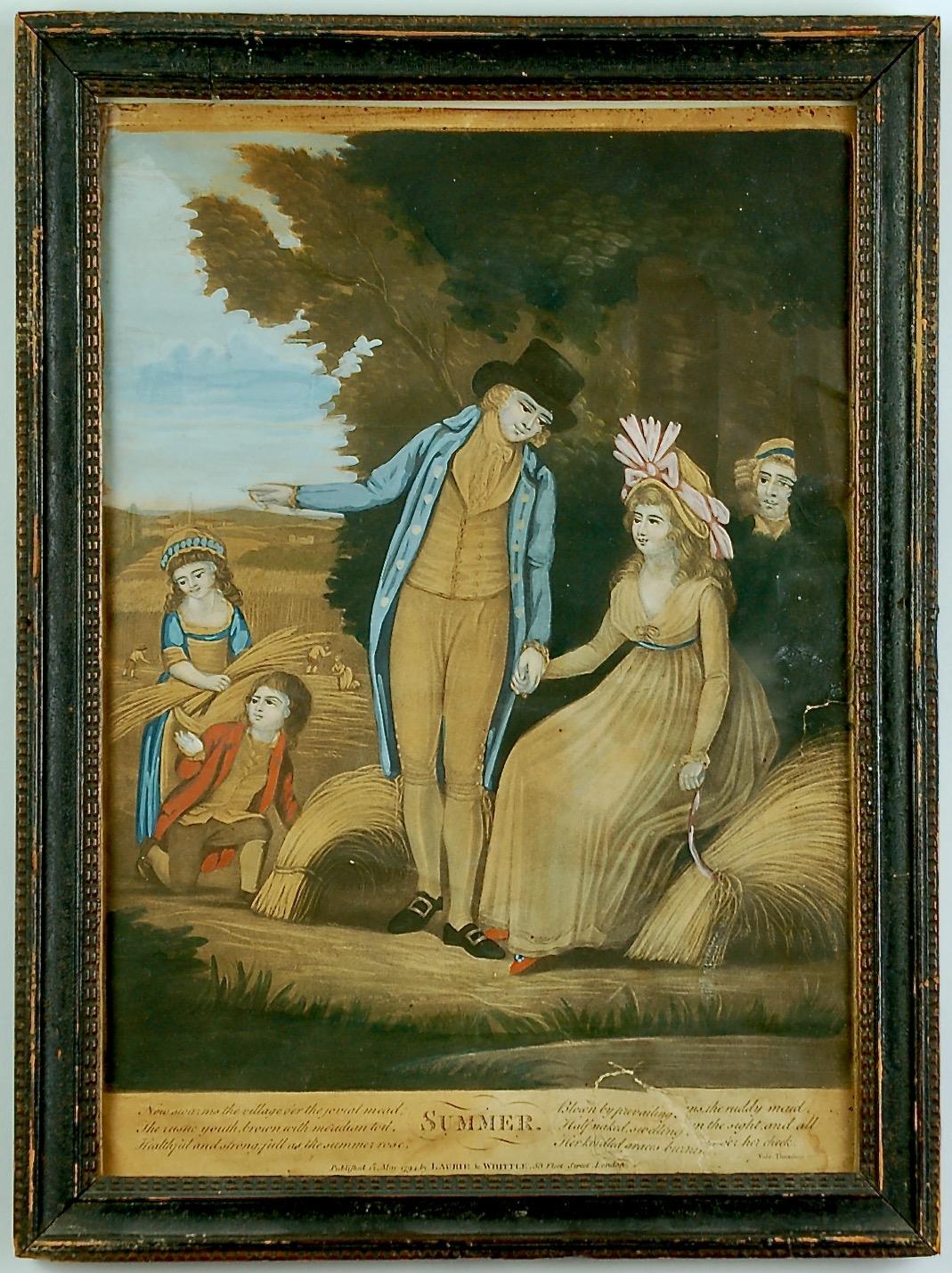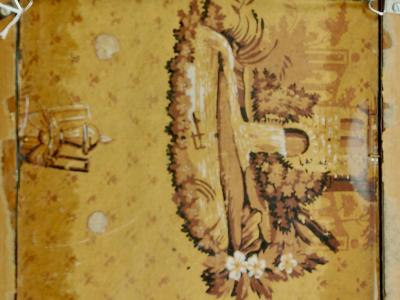"Summer." from Thomson's The Seasons (one of a set of four)
London, England
1794
Maker
Laurie & Whittle (fl. 1794-1858)
Measurements
Frame: 16-3/8 in x 12-1/8 in x 1 in; sight, 14-1/8 in x 9-7/8 in
Materials
Mezzotint and gouache on paper
Credit Line
Historic Odessa Foundation, gift of H. Rodney Sharp
Accession Number
1959.4050
Inscription
"Summer." is printed in the center of the banner below the image. "Now swarms the village o’er the jovial mead; / The rustic youth, brown with meridian toil, / Healthful and strong; full as the summer rose," forms a text block on the left side, and "Blown by prevailing [illegible] the ruddy maid, / Half naked, swelling [illegible] the sight, and all / Her kindled graces burning oe’r her cheek." forms the right-had text block. "Vide Thomson’s Seasons." is below the right text block near the margin. "Published 12th May 1794 by Laurie & Whittle, 53 Fleet Street, London." runs along the center bottom.
Condition Notes
The print has darkened and is stained. The print has a 2-inch diagonal tear in the lower right that runs through and obscures text.
Provenance
Ex coll. H. Rodney Sharp
Comments
The print is part of a series of the four seasons (accession nos. 1959.4049, 1959.4051, and 1959.4052). The set of four prints was inspired by Scottish author James Thomson’s (1700-1748) book of blank verse poetry, The Seasons, first published in 1730. It continued to be republished for the next 140 years, becoming one of the most popular books in the English language. It inspired all sorts of representations of the seasons in all sorts of media and object types.
“Summer” shows a young man and woman holding hands with an older woman looking at them from behind the seated young woman. A boy and girl handle sheafs of wheat on the left, and three other figures cut wheat in the distance behind them. The banner below the image records verses from the poem.
The printing firm, Laurie and Whittle, was established by Robert Laurie (c. 1755-1836) and James Whittle (1757-1818). Laurie retired in 1812, leaving management of the firm to his son, Richard Holmes Laurie (1777-1858), who kept it going until his death. The firm was known primarily for printed maps and charts.
A fragment of printed wallpaper from about 1800 is mounted on the back of the frame.

